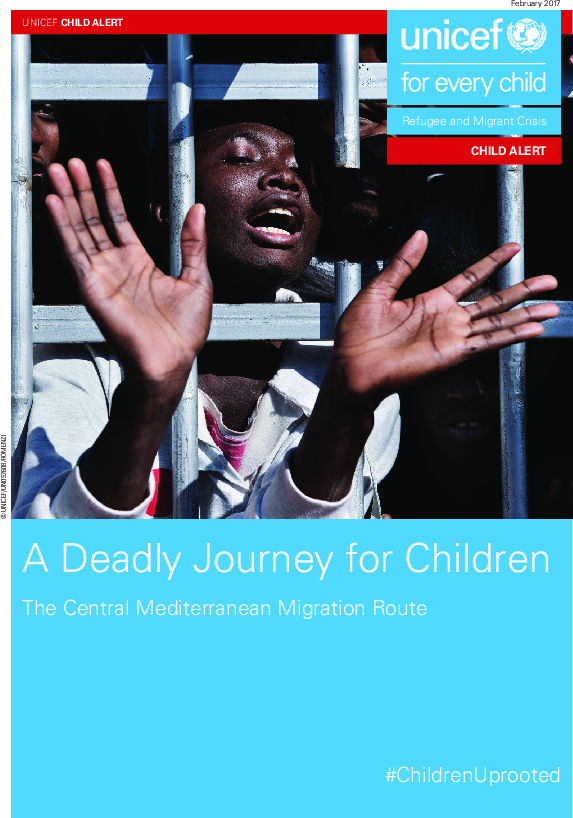
Reports, Study: Assessments, Study: Research
A Deadly Journey for Children: The Central Mediterranean Migration Route
Publication year:
2017
English
Format:
(4.7 MiB)
Publisher:
UNICEF, United Nations Children's Fund
Every day, thousands of women and children travel from the hinterlands of Africa and the Middle East, across the Sahara to the Mediterranean Sea in Libya in hopes of reaching safety in Europe. They flee war, violence and poverty. They endure exploitation, abuse, violence and detention. Thousands die. It is not only a risky route taken by desperate people, but also a billion-dollar business route controlled by criminal networks. It is called the Central Mediterranean Migration Route and is among the deadliest journeys in the world for children.
In 2016, over 181,000 migrants − including more than 25,800 unaccompanied children − put their lives in the hands of smugglers to reach Italy. The most dangerous part of the route is a 1,000-kilometre journey from the southern border of Libya’s desert to its Mediterranean Coast combined with the 500-kilometre sea passage to Sicily. Last year 4,579 people died making the crossing (i.e. 1 in every 40 of those who made the attempt). It is estimated that at least 700 children were among the dead. Different regions are controlled by conflicting militias who make their own rules, control border crossings and detain migrants for exploitation. On every step of this dangerous journey, refugees and migrants are easy prey.
To better gauge what was happening to migrant children and women who were making this journey, UNICEF’s Libya Country Office commissioned a needs assessment survey in 2016. The final sample comprised 122 participants, including 82 women and 40 children. The migrant children interviewed for the study represented 11 nationalities. Some of the child interviewees were born in Libya during their mothers’ migration journeys. Among the 40 children interviewed, 25 were boys and 15 were girls between the ages of 10 and 17 years old.
The report concludes with recommendations to stop the exploitation, abuse, and death of women and children along this route and provide safe and legal pathways to the lives they seek.
Read full abstract
View & Download
English
1 Documents
Document information
Content type
Rights
© Author/Publisher
Keywords
Found a mistake? Help us improve!
If you have noticed a document assigned to the wrong author or any other inaccuracies, let us know! Your feedback helps us keep our data accurate and useful for everyone.
Share
Link
